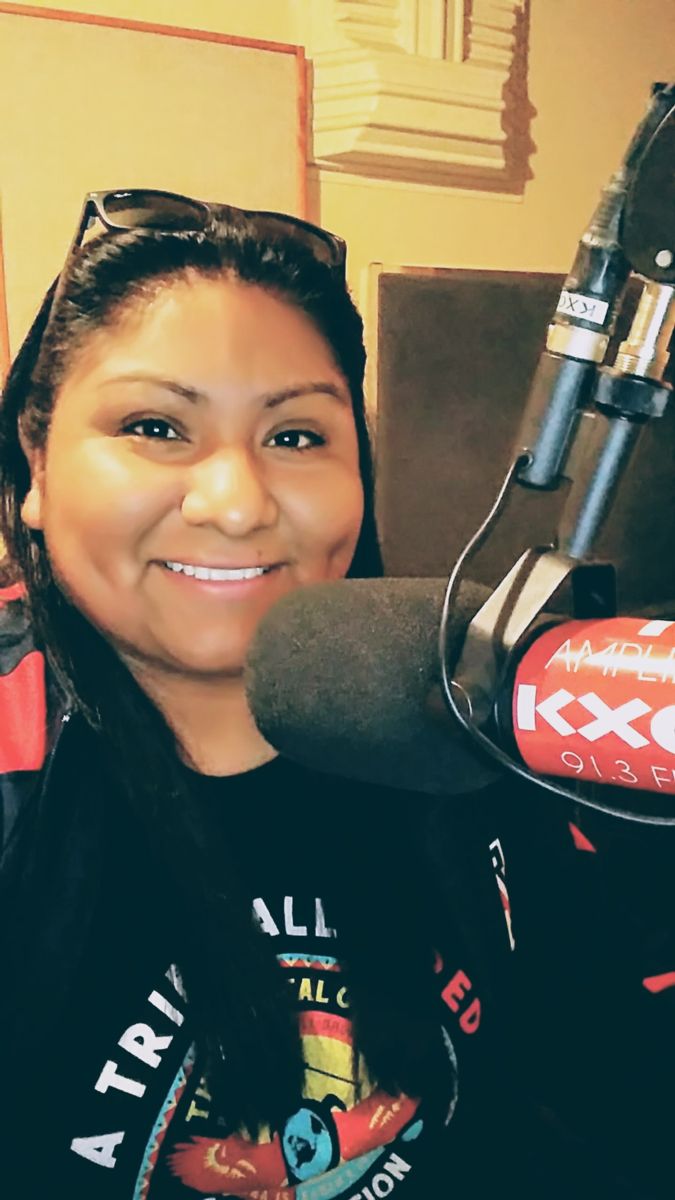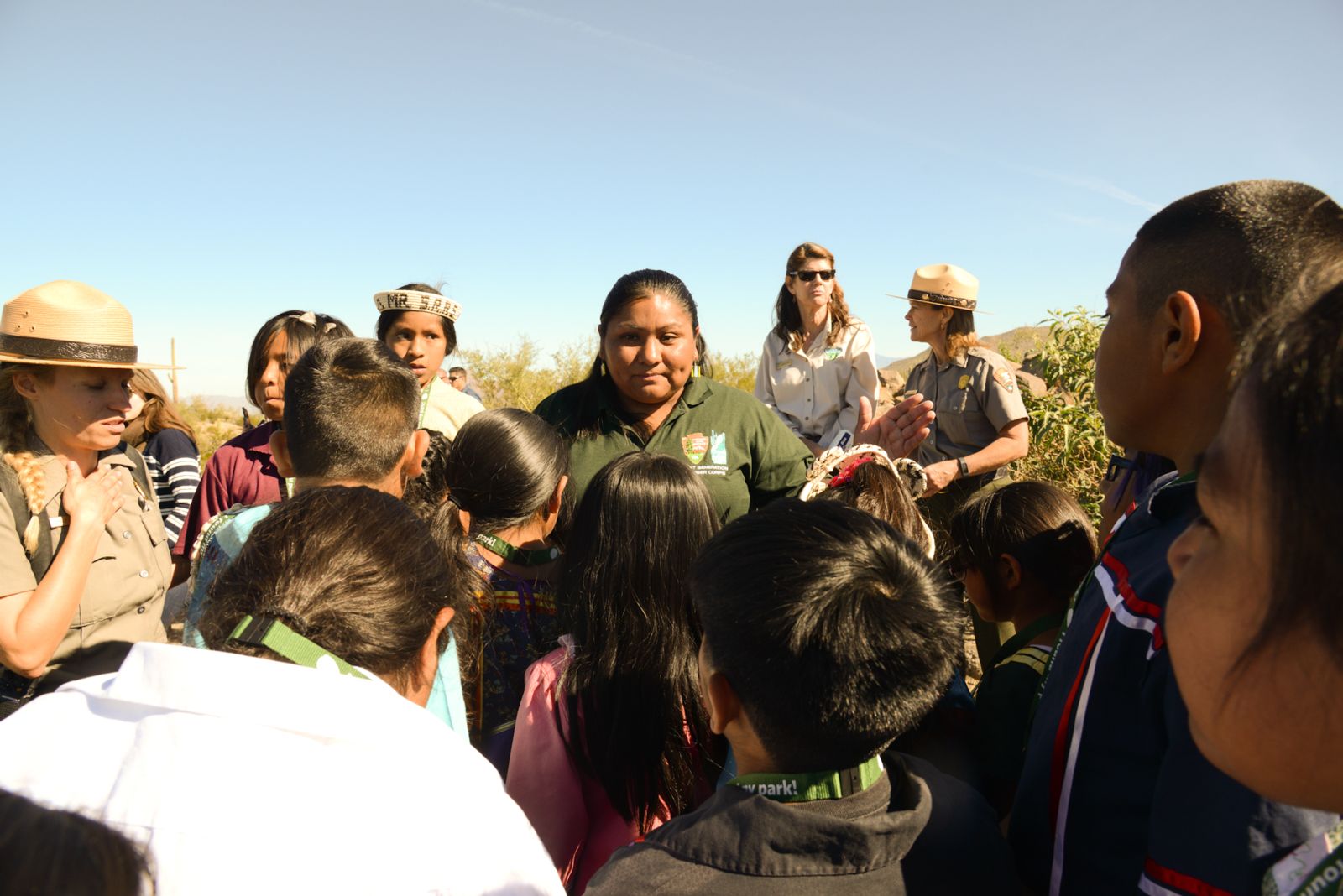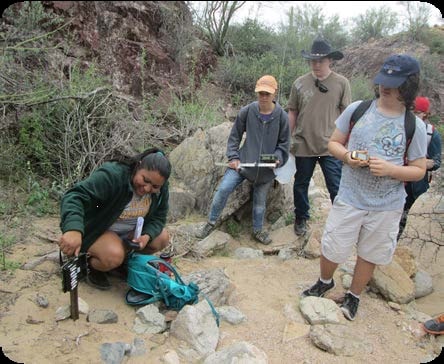-
ENP 15.5 Saguaro: Ancestral Roots, Tradition, and Pride
07/02/2019
Pictured here is the phenology study from 2018, using a long selfie stick that park staff made to capture photos of saguaro blooms and fruiting on the very tops of saguaro arms.
Saguaro National Park has started a Citizen Science project to study saguaro flowering phenology. Phenology is the study of natural life events, such as when plants flower. Each day they go into the desert and count saguaro flowers. The goal is to tie the flowering dates with meteorological measurements and past data on saguaro flowers to learn more about changes in saguaro phenology over time.
Source: NPS
“Traditionally, it was believed that the Saguaro [cactus] was a human being.” - Tina Andrew on the Saguaro’s cultural significance to the Tohono O’odham Nation
Join Danielle and Park Ranger Tina Andrew on a journey into the native ancestry of Saguaro National Park. Tina Andrew is a member of the Tohono O’odham Nation, hosts the podcast “Cultivating Indigenous Voices,” and serves as an ancestral park ranger who works to connect youth and the community to the native roots of Saguaro National Park.
 Photo: Tina Andrew, a member of the Tohono O’odham Nation, hosts the podcast "Cultivating Indigenous Voices"
Photo: Tina Andrew, a member of the Tohono O’odham Nation, hosts the podcast "Cultivating Indigenous Voices"
As both a member of the Tohono O’odham Nation, a tribe native to the lands of Saguaro National Park, and as a park ranger serving for over five years, Tina Andrew offers a complex and unique perspective on the significance of the Saguaro National Park to different communities of people. She brings a deeply personal perspective into the cultural and ancestral significance of Saguaro alongside a keen awareness of the importance of exploration by both native and non-native people, especially youth.
As we walk down this winding ancestral path, we discuss the beautiful blooms during the months of May through July, important traditions of the Tohono O’odham Nation, such as the Saguaro Fruit Harvest, and how Tina uses her unique position as both a tribe member and ancestral park ranger to help native youth connect with their ancestry.
Listen closely as Tina shares how natives interacted with the land, discovered food in the rugged territory, and crafted medicine from Saguaro’s plant life. Learn how natives maintain some of these traditions, and how Tina works to engage younger generations with their ancestral traditions.
In this episode, she shares her personal connection to the park’s’ great tribal history and her work to implement programs to keep the native culture thriving in Saguaro’s rich, shared spaces.
Join us as we revel in Saguaro National Park’s vast impact on many communities of people, then and now.
Our Discussion Journey: Photo: Tina Vavages and students
Photo: Tina Vavages and students- Tina discusses her role as an ancestral park ranger in Saguaro National Park (3:24)
- Tina shares how working as an ancestral park ranger in Saguaro National Park allows her to connect with youth and members of the Tohono O’odham Nation, whose ancestral lands are contained within the boundaries of the park. (5:23)
- Tina shares how connecting native youth to their Tohono O’odham Nation ancestry cultivates a sense of shared pride within Saguaro National Park. (6:24)
- Tohono O’odham Nation and the cultural significance of the Saguaro cactus. (8:36)
- The Saguaro Fruit Harvest and its cultural importance to the native Tohono O’odham Nation. (9:42)
- Tina discusses the historical context of the Fruit Harvest in Western region of Saguaro National Park. (11:04)
- The Tohono O’odham Nation’s word-of-mouth Saguaro Fruit Harvest demonstrations and how they spark joy for natives and non-natives! (12:18)
- Tina shares cultural legends, stories, and the significance of the harvest season to natives. (15:13)
- How partnering with schools and youth is important to help carry on native traditions and culturally-rich histories of Saguaro National Park. (17:26)
- Tina discusses various traditionally edible and medicinal plants in Saguaro and whether they are still used today. (18:03)
- How is the land used for traditional entertainment in Saguaro? (20:21)
- How the natives of Tohono O’odham Nation sing for the mountains of the park. ( 22:26)
- The traditional story of how a coyote and buzzard spread the saguaro cacti all over the park. (23:21)
- What is one thing that Tina, as a native of the land, wants visitors and non-natives to understand about Saguaro and the native people to that space? (25:19)
- Tina shares why the Saguaro National Park is still so special to her and how she hopes that connecting the youth, both native and non-native, to the environment and the land of Saguaro might make a lasting impact for the future of science and natural spaces. (29:02)
- Tina shares a bit about her podcast, “Cultivating Indigenous Voices.”

As you travel to explore these natural beauties, be sure to remember some tips from seasoned travelers and park professionals.
Tips for your Travels:
Pair the following tips with the sample itineraries from our recent family adventure to make the most of your Saguaro National Park visit:- Always check the weather!
- Come during the summer for the biodiversity, but be wary of the heat!
- Allow for extended time to complete more challenging “elevation” hikes in Saguaro
- Carry more water than you think you need!
- If traveling in the summer, map your hikes so you finish early - before 9am! - and save trips to visitors centers for midday when the temperatures climb
- Winter is an amazing time for backcountry camping
- November through April are the busiest months and parking is limited so consider coming later in the day and plan sunset hikes
- Leave your pets at home as encounters with wildlife can be deadly
- Loop drives offer great views with pull-offs for picnicking and trails for quick hikes
- The Arizona-Sonora Desert Museum is a short drive from the park and features historic collections, live plants, and desert animals such as the javelina in a zoo-like setting
Resources:- Visit Saguaro National Park for more information.
- Check out Tina’s podcast, “Cultivating Indigenous Voices!”
- Become a Patron to continue our great journey through these
player
Podcasts
